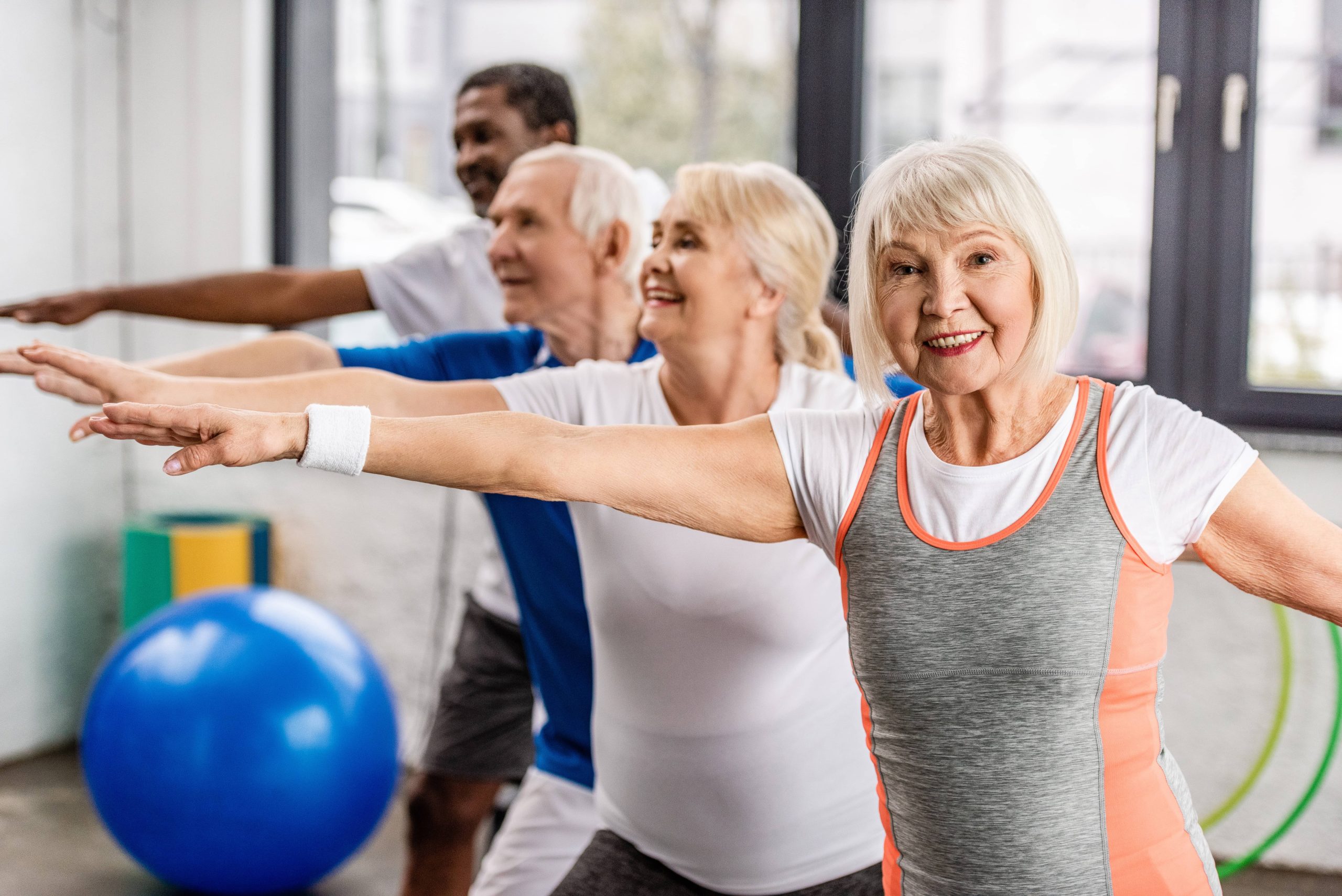
Aging is an inevitable process, but how we age is something we can influence. The concept of “active aging” emphasizes the importance of embracing a lifestyle that promotes not just longevity but also quality of life in our later years. Exercise is a cornerstone of active aging, offering numerous benefits that can enhance physical health, mental well-being, and overall vitality. In this blog post, we’ll explore a variety of exercises that are particularly beneficial for enhancing active aging and providing practical tips to incorporate them into your routine.
The Importance of Exercise in Aging
Before diving into specific exercises, let’s briefly discuss why staying active is crucial for healthy aging. Regular physical activity helps maintain mobility and independence, reduce the risk of chronic diseases such as heart disease, diabetes, and osteoporosis, and improve cognitive function. Exercise also significantly impacts mental health, reducing stress, anxiety, and depression while boosting overall mood and confidence.
As we age, muscle mass and bone density naturally decrease, and maintaining these through exercise becomes paramount to preventing falls and fractures. Additionally, exercise enhances balance and coordination, crucial for maintaining independence.
Types of Exercises for Active Aging
1. Aerobic Exercises
Aerobic exercises, also known as cardiovascular exercises, are designed to get your heart pumping and increase your cardiovascular capacity. These exercises are essential for enhancing lung function, improving circulation, and reducing the risk of heart disease.
Examples:
– Walking: A low-impact and highly accessible exercise. Try to maintain a brisk pace for at least 30 minutes a day, five days a week.
– Swimming: A great option for those with joint pains, swimming offers a full-body workout without putting stress on the joints.
– Cycling: Whether it’s on a stationary bike or out in nature, cycling improves endurance and heart health.
2. Strength Training
Strength training is crucial for preserving muscle mass and bone density, which are vital for maintaining an active lifestyle as we age. It involves exercises that improve muscle strength using resistance.
Examples:
– Weightlifting: Simple exercises with dumbbells or resistance bands can help build muscle strength.
– Bodyweight Exercises: Push-ups, squats, and lunges are effective at increasing strength without the need for equipment.
– Pilates: Focuses on core strength, flexibility, and overall muscle balance.
3. Flexibility and Balance Exercises
Flexibility and balance exercises improve your range of motion, reduce stiffness, and decrease the risk of falls. These exercises are essential for functional fitness, enabling you to perform daily tasks with ease.
Examples:
– Yoga: Combines physical postures, breathing exercises, and meditation to enhance flexibility, balance, and mental well-being.
– Tai Chi: A form of martial arts focusing on slow, controlled movements to improve balance, coordination, and mental focus.
– Stretching Routines: Incorporating stretching into your daily routine keeps muscles limber and joints flexible.
4. Functional Fitness Exercises
Functional fitness exercises mimic everyday activities to improve body mechanics. They focus on movements like squatting, reaching, and bending, which are essential for performing daily tasks independently.
Examples:
– Step-ups: Mimic the movement of climbing stairs, improving strength and coordination.
– Chair Squats: Help strengthen leg muscles and improve posture, enhancing ease of getting up from seated positions.
– Pushing and Pulling Exercises: Build strength in your arms and back, crucial for tasks like opening doors or lifting groceries.
Incorporating Exercise into Daily Life
1. Start Slow and Progress Gradually
If you’re new to exercise or have been inactive for a while, it’s essential to start slow. Gradually increase the intensity and duration of your exercises to avoid injury. Listen to your body and give yourself time to recover between workouts.
2. Make it Social
Exercising with friends or joining a group class not only makes exercise more enjoyable but also keeps you motivated and accountable. Social interaction is another component of active aging, offering mental health benefits and reducing feelings of isolation.
3. Set Realistic Goals
Setting achievable goals gives you something to strive for and a way to measure your progress. Whether it’s mastering a particular yoga pose, walking a certain distance, or lifting heavier weights, goals provide focus and motivation.
4. Mix It Up
Diversify your exercise routine to target different muscle groups and keep boredom at bay. Alternating between aerobic, strength, flexibility, and functional fitness exercises ensures a well-rounded fitness regime.
5. Prioritize Consistency Over Intensity
It’s better to exercise moderately and consistently than to have intense, infrequent workouts. Aim for at least 150 minutes of moderate exercise per week, as recommended by health experts.
6. Pay Attention to Nutrition and Hydration
Exercise and nutrition go hand in hand. As you embrace active aging, be mindful of your diet. Ensure adequate protein intake for muscle repair and growth, and stay hydrated to maintain energy levels and support bodily functions.
7. Consult a Professional
If you’re unsure where to start or have specific health concerns, consult with a fitness professional or physical therapist. They can help tailor exercise programs to suit your individual needs and ensure you’re following safe practices.
Conclusion
Active aging is not just about adding years to your life; it’s about adding life to your years. By integrating regular exercise into your daily routine, you can enhance your physical, mental, and emotional well-being. Whether you prefer walking, weightlifting, yoga, or tai chi, find exercises that you enjoy and that fit into your lifestyle. Remember, it’s never too late to start, and every step you take towards staying active will contribute to a healthier, more fulfilling life. Here’s to embracing the journey of active aging with enthusiasm and vigor!











